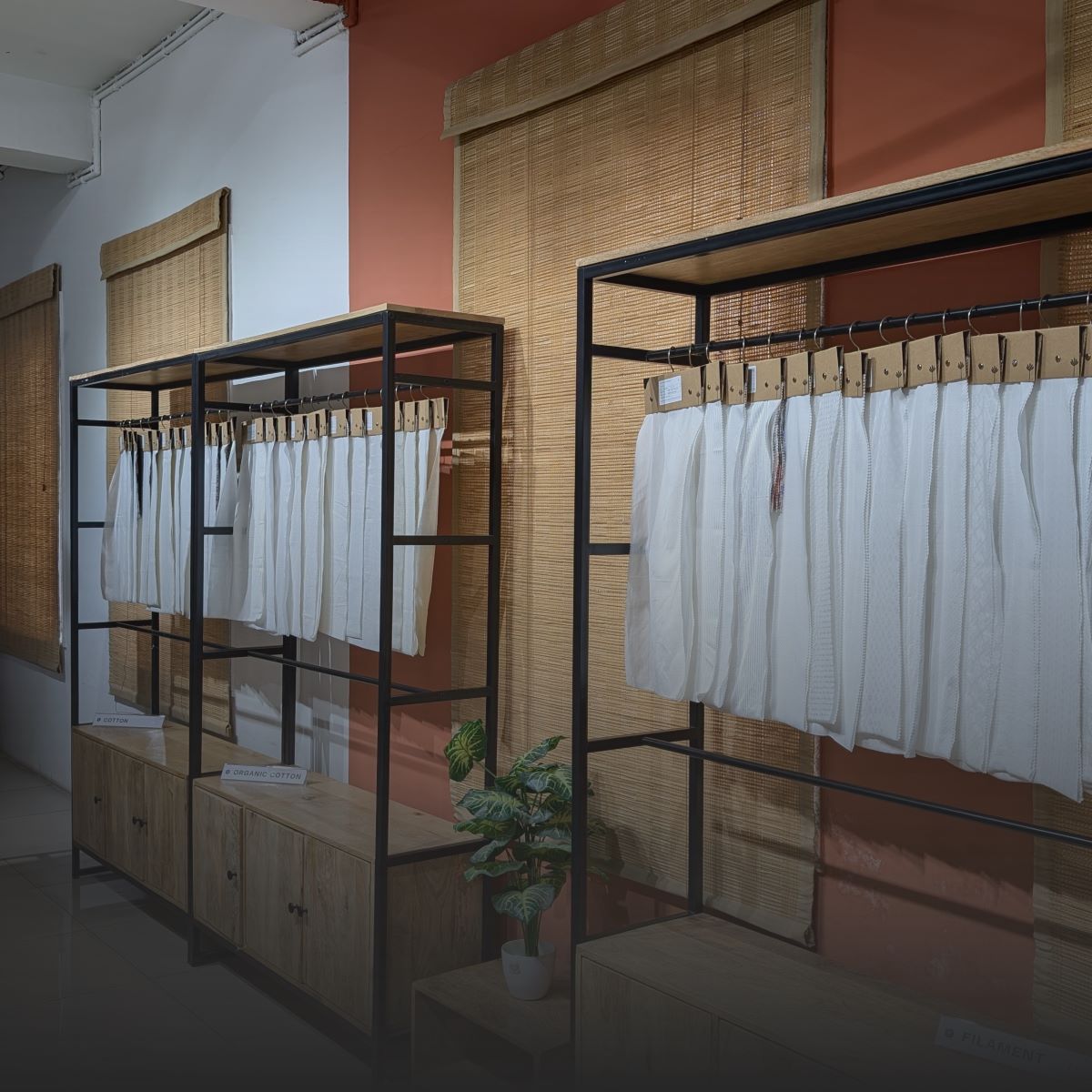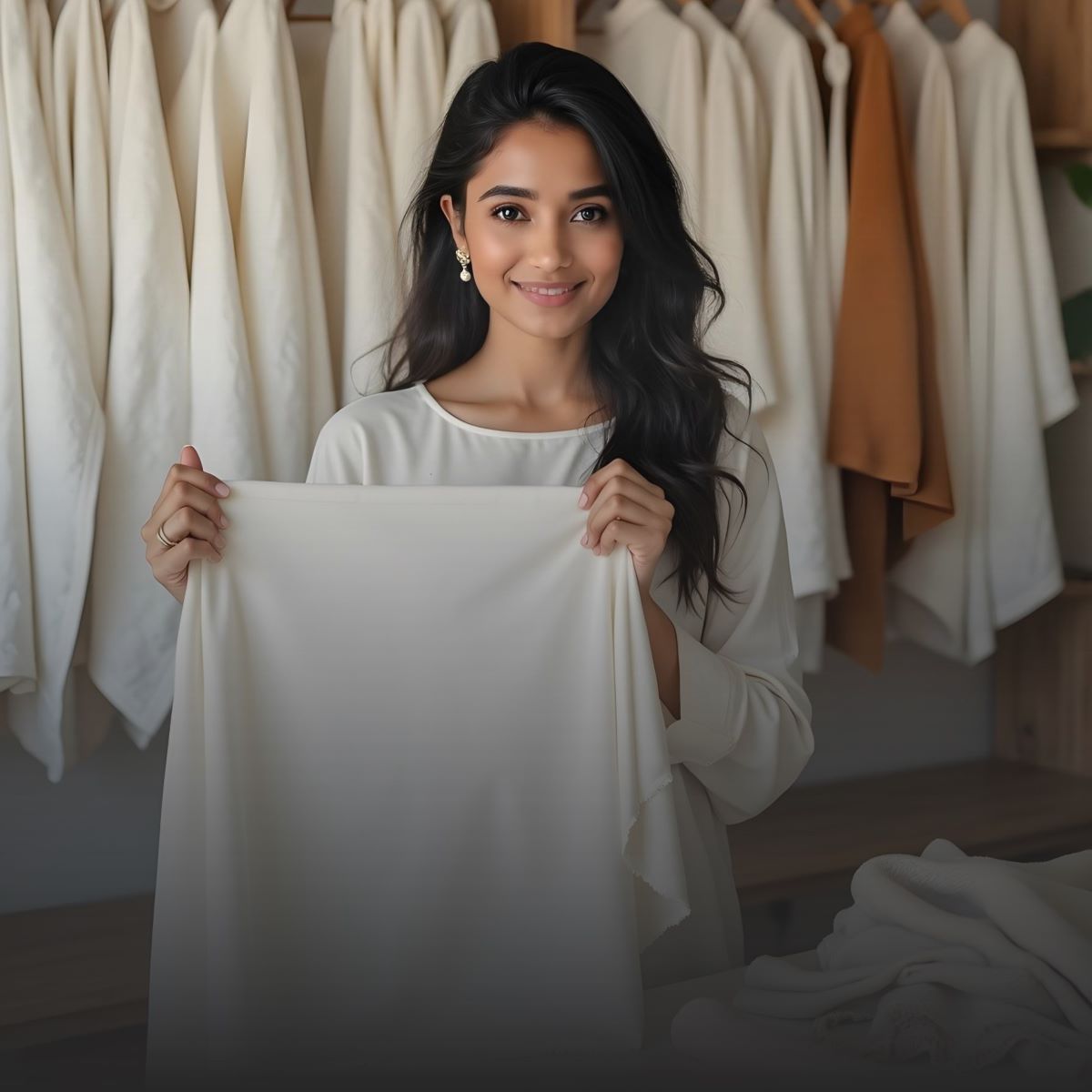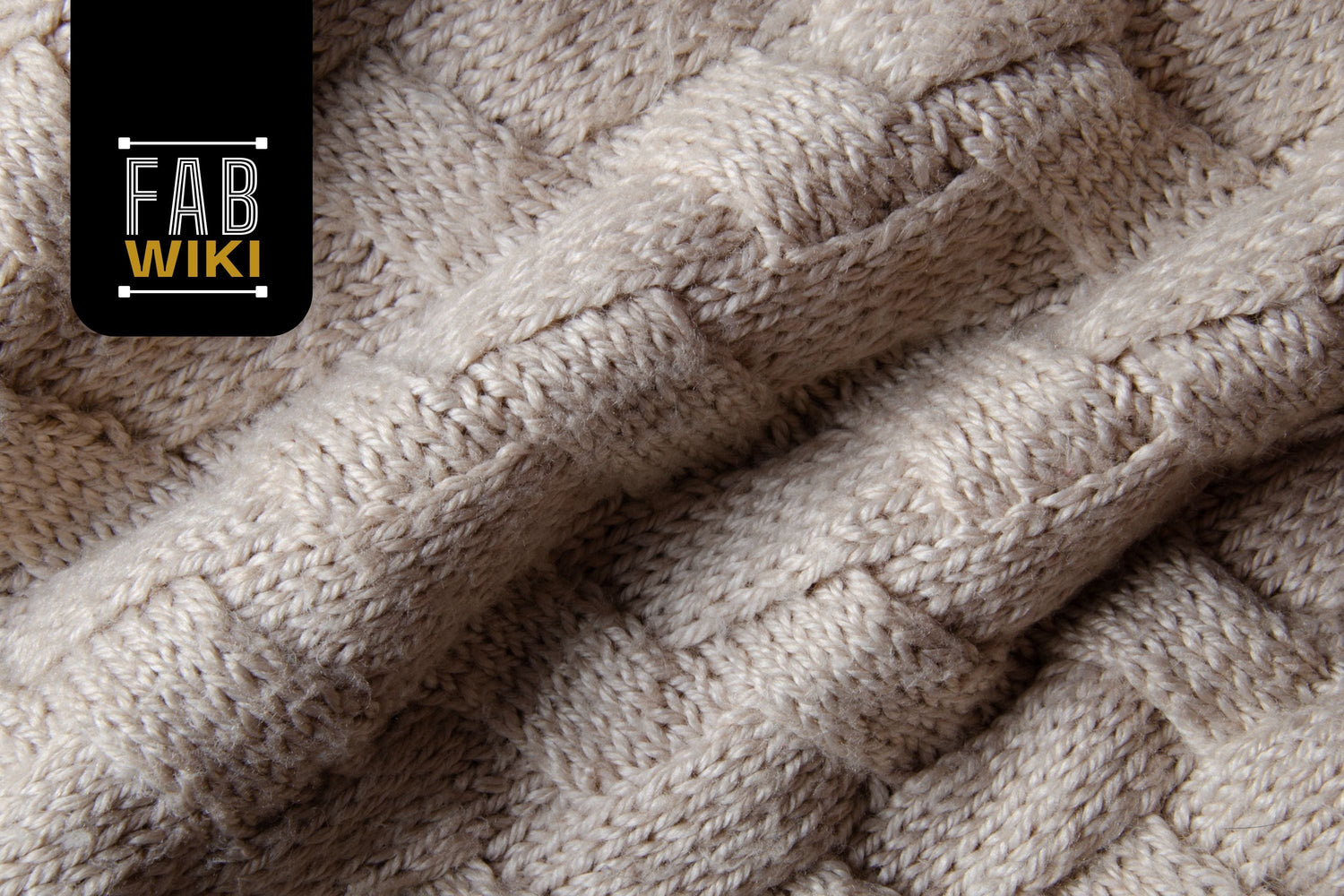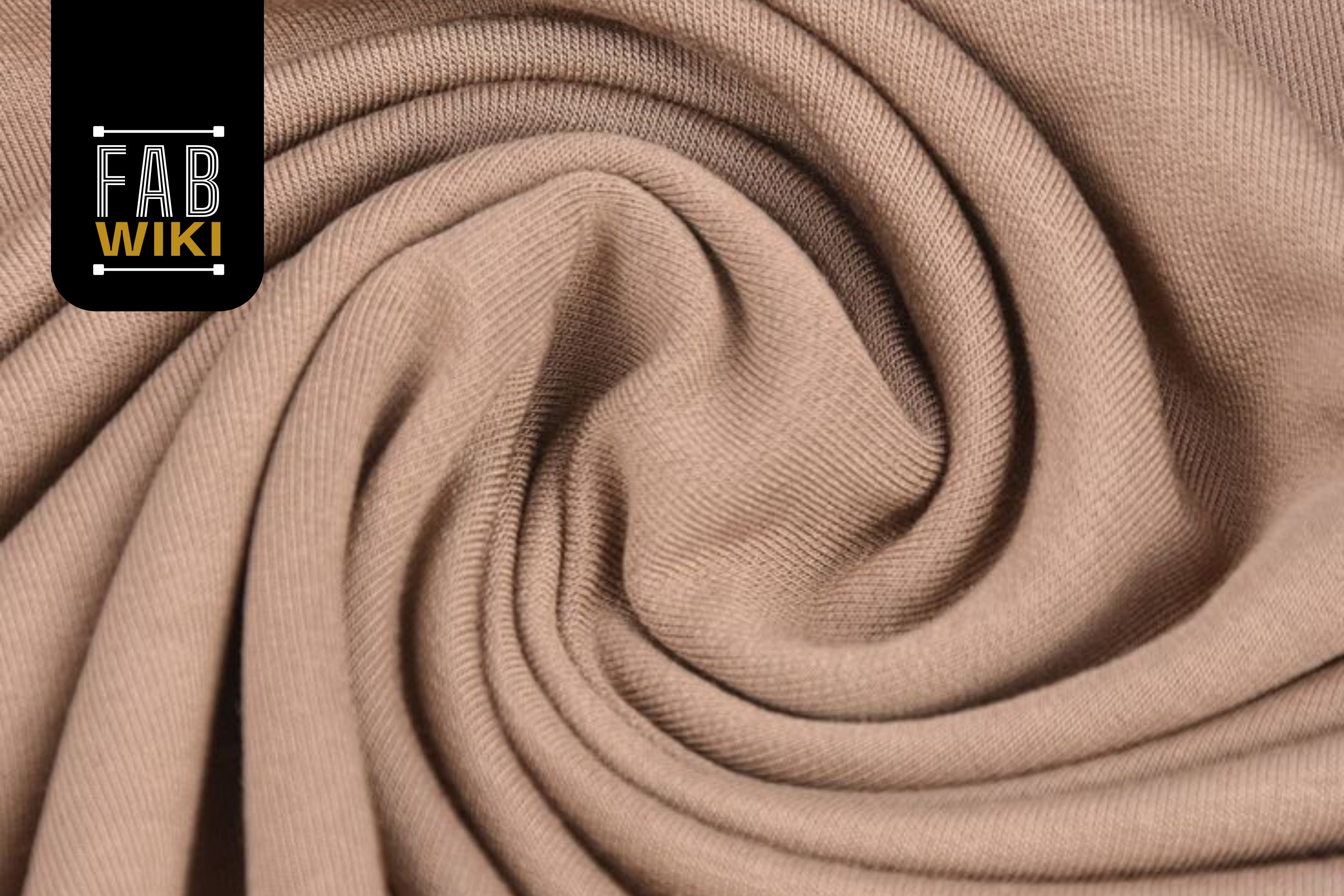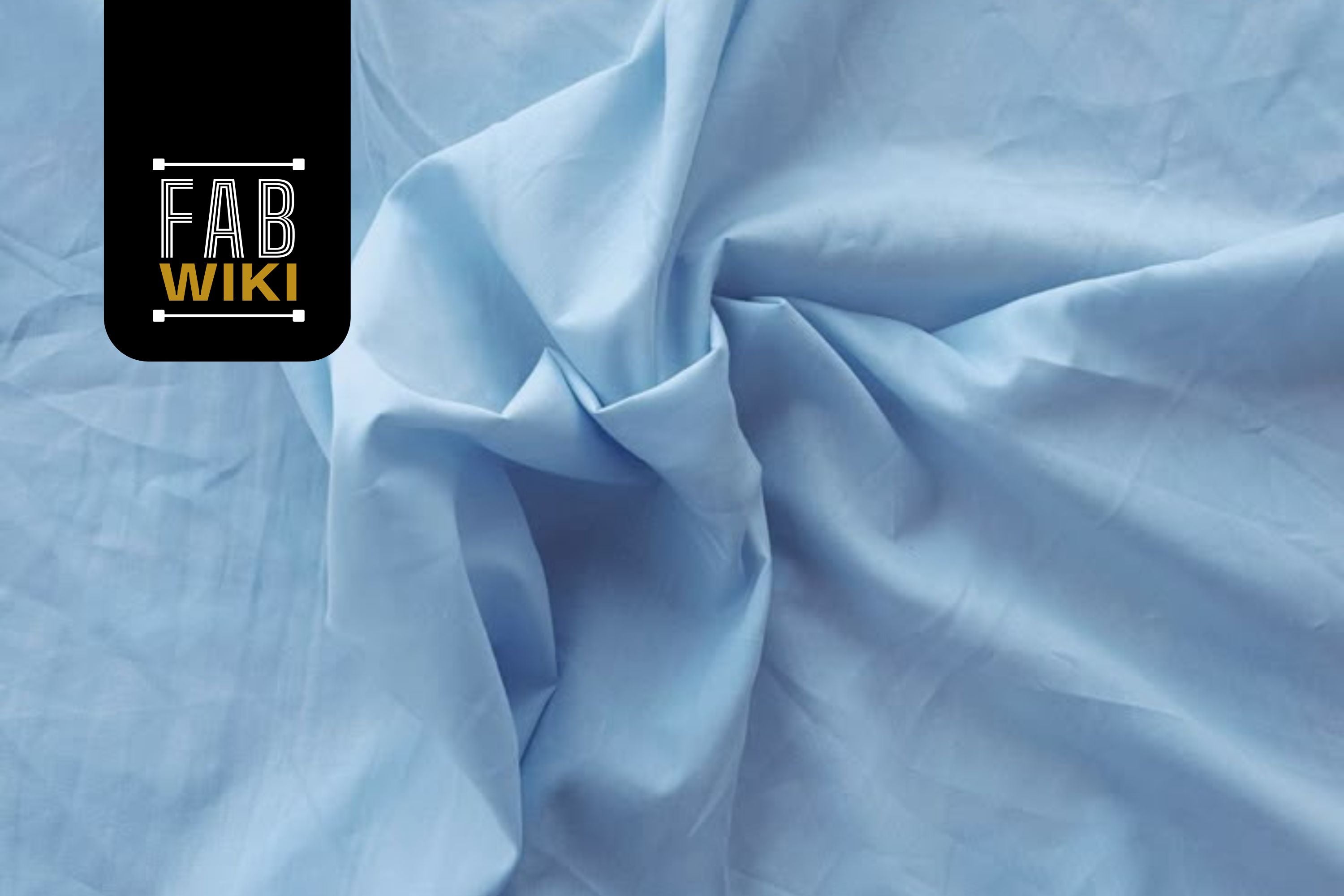Introduction to Knitted Fabrics
- Knitted fabrics are popular in fashion because they stretch, feel comfortable and can be used in many types of clothing.
- They are made by looping yarns together, giving them flexibility and softness, which is different from woven fabrics.
- Knitted fabrics are used in many clothes, from casual wear to activewear, because they are breathable and last a long time.
- With new textile technology, knitted fabrics are becoming more adaptable and eco friendly.
- These improvements are making knitted fabrics even more important in modern fashion.
History of Knitted Fabrics

- Knitted fabrics have been around since ancient times, first used by civilizations like those in Egypt and the Middle East.
- In the Middle Ages, knitting became an important skill in Europe, mainly for making stockings and undergarments.
- The Industrial Revolution brought knitting machines, making it faster and easier to produce knitted fabrics.
- In the 20th century, designers like Coco Chanel and Jean Patou helped make knitwear a fashionable everyday choice.
- Stars like Lana Turner made knitted sweaters popular, giving them a sleek, body hugging appeal.
- In the 1960s, Missoni’s colorful zigzag patterns and Sonia Rykiel’s striped designs made knitwear trendy.
- By the 1980s, knitwear moved from sportswear to high fashion, with designers like Romeo Gigli and Ralph Lauren creating luxurious knit pieces.
- Today, knitted fabrics are still evolving with new technology, remaining essential in both casual and high end fashion.
What Are Knitted Fabrics?

- Knitted fabric is created through the process of knitting, where yarns are interloped or intermeshed to form loops.
- This unique structure gives knitted fabrics their flexibility and stretch, making them different from woven fabrics.
- Knitted fabrics are more adaptable and can easily be constructed into smaller, intricate pieces.
- This makes knitted fabrics ideal for creating items like socks, hats and other form fitting apparel.
- The yarn used and the knitting technique determine the fabric’s weight, durability and specific performance features.
Modern Innovations in Knitted Fabrics:
|
Innovation |
Description |
|
Seamless Garment Production |
Advanced knitting machines allow seamless garment creation, reducing fabric waste and production time. |
|
3D Knitting Technology |
Enables precise garment shaping, eliminating traditional cutting and sewing, leading to sustainable and efficient manufacturing. |
|
Smart Textiles |
Knitted fabrics incorporate moisture wicking, antibacterial properties and temperature regulation for enhanced comfort and performance. |
|
AI-Driven Knitting Systems |
AI optimizes knitting production, improving efficiency and reducing errors, making processes faster and more cost effective. |
|
Sustainable Fibers |
Fibers like organic cotton, bamboo and recycled polyester are being used more in knitted fabrics, contributing to a more eco friendly textile industry. |
Types of Knitted Fabrics:
|
Fabric Type |
Description |
Key Features |
|
Jersey Knit |
Lightweight, single knit fabric |
Soft, stretchy, used for t-shirts and dresses |
|
Rib Knit |
Alternating knit and purl stitches |
High elasticity, used for cuffs and collars |
|
Interlock Knit |
Double knit fabric with a smooth finish |
More stable, less stretch, used for dresses and activewear |
|
Purl Knit |
Reversible knit with a textured appearance |
Good elasticity and warmth |
|
Tricot Knit |
Warp knitted fabric with a smooth face |
Lightweight, durable, used in lingerie and activewear |
|
Raschel Knit |
Openwork, lace like fabric |
Decorative and lightweight, used in fashion and upholstery |
Features of Knitted Fabrics

- Knitted fabrics are highly stretchable, offering flexibility and movement.
- The soft and smooth texture of knitted fabrics ensures maximum comfort.
- Knitted fabrics are durable and wrinkle resistant for long lasting wear.
- Knitted fabrics are breathable and moisture absorbing, making them suitable for all seasons.
Advantages of Knitted Fabrics
- Knitted fabrics offer superior comfort due to their inherent stretch and softness, ensuring a comfortable fit.
- The fabrics drape beautifully, making them a perfect choice for both fashion and sportswear applications.
- Knitted fabrics are quick drying and easy to maintain, requiring minimal effort to care for.
- They provide excellent thermal insulation while remaining breathable, offering warmth without compromising on comfort.
Disadvantages of Knitted Fabrics
- Knitted fabrics are more prone to pilling and snagging compared to woven fabrics, which can affect their appearance over time.
- They can stretch out of shape if not properly cared for, particularly in areas that experience repeated stress or strain.
- Some knitted fabrics may not offer the same level of durability as woven fabrics, especially when exposed to rough wear or harsh conditions.
Sustainability and Environmental Impact of Knitted Fabric

- Eco friendly fibers like organic cotton, Tencel and bamboo help reduce environmental impact and improve sustainability in knitted fabrics.
- Recycled polyester knits contribute to reducing textile waste and lowering the carbon footprint.
- Seamless knitting technology reduces fabric waste during the garment production process.
- Biodegradable and natural fiber knits are more environmentally friendly than synthetic fabrics.
- Circular fashion models, focusing on recycling and reusing materials, are being explored to promote waste reduction in the fashion industry.
Care and Maintenance Tips for Knitted Fabrics
- Wash knitted fabrics in cold water to prevent shrinkage and preserve elasticity.
- Use mild detergents and avoid harsh chemicals to protect the fibers.
- Dry knitted fabrics flat to maintain their shape and avoid stretching.
- Store knitted garments folded, not hung, to prevent distortion and maintain their integrity.
5 Simple Tips for Sewing Knit Fabric

- Use the Right Needle: A ballpoint or twin needle is best for knits. Regular needles can create holes in the fabric but ballpoint needles slide between the fibers without damaging them.
- Try a Walking Foot: This special foot helps feed the fabric evenly, preventing stretching and uneven stitching. It moves both the top and bottom layers together for a neat finish.
- Cut on a Flat Surface: Always cut fabric on a table or the floor. If the edges hang, the fabric may stretch, leading to uneven cuts.
- Use a Zig Zag Stitch: A zig zag stitch stretches with the fabric, keeping the seams strong and flexible. A straight stitch can break when the fabric stretches.
- Prevent Stretching with Tissue Paper: Placing tissue paper under or over the fabric while sewing helps keep the fabric in place. You can remove the paper after stitching.
Common Applications and Uses of Knitted Fabrics:
|
Application |
Description |
|
Casual Wear |
T-shirts, leggings, hoodies and everyday apparel |
|
Sportswear |
Stretchable, moisture wicking fabrics for activewear and yoga wear |
|
Luxury Fashion |
Designer knitwear, dresses and high-end garments |
|
Home Textiles |
Blankets, cushion covers and upholstery |
|
Accessories |
Scarves, gloves and hats for comfort and warmth |
The Role of Knitted Fabrics in Fashion and Design:
|
Use in Fashion/Design |
Description |
|
Casual and Athleisure Wear |
Knitted fabrics are popular in casual and athleisure clothing for their comfort and flexibility. |
|
High-Performance Sportswear |
Ideal for moisture wicking and stretchability, knitted fabrics are essential in sportswear. |
|
Luxury Fashion |
Designers incorporate innovative knit patterns into luxury fashion pieces for a unique look. |
|
Knitted Home Textiles |
Knitted fabrics are used in home textiles like blankets and upholstery, providing warmth and softness. |
|
Smart Knitted Textiles |
Emerging in wearable tech and medical applications, smart knitted textiles offer advanced functionalities. |
Manufacturing Process of Knitted Fabrics:

|
Step |
Description |
|
Yarn Selection |
Choosing fibers like cotton, wool, polyester or blends |
|
Knitting |
Using hand or machine knitting to create fabric structures |
|
Dyeing |
Applying natural or synthetic dyes for vibrant colors |
|
Finishing |
Treatments like softening, anti-pilling or moisture wicking |
Knitted Fabrics vs. Woven Fabrics

|
Aspect |
Knitted Fabrics |
Woven Fabrics |
|
Stretchability |
High elasticity |
Low elasticity unless blended with spandex |
|
Comfort |
Soft and flexible |
More structured and crisp |
|
Durability |
Can snag easily |
More resistant to wear and tear |
|
Maintenance |
Requires careful washing to prevent stretching |
Easy to care for |
|
Cost and Efficiency |
Generally cheaper to produce |
Higher cost due to the complex weaving process |
|
Uses |
Ideal for sportswear, casual wear and lingerie |
Used in formal wear, upholstery and structured garments |
Cotton Knit Fabric vs. Viscose Knit Fabric:
|
Feature |
Cotton Knit Fabric |
Viscose Knit Fabric |
|
Material |
Made from cotton fibers |
Made from viscose fibers |
|
Texture |
Soft and flexible |
Soft and smooth |
|
Breathability |
Highly breathable |
Breathable |
|
Absorbency |
High absorbency |
Moderate absorbency |
|
Drapability |
Moderate |
Excellent drape |
|
Stretchability |
Can overstretch over time |
Good stretch and shape retention |
|
Shape Retention |
Loses shape over time |
Holds shape well due to weight |
|
Best For |
Dresses, wide trousers, kilts, casual wear |
Dresses, skirts, jackets, trousers |
|
Seasonality |
Suitable for all seasons |
Best for moderate to warm climates |
Where You Can Buy Knitted Fabrics
Online Stores:
- Fabriclore: Offers a wide range of knitted fabrics with customization options.
- Etsy: Features handmade and specialty knitted fabrics.
- Mood Fabrics: A go-to destination for high quality designer knits.
- Alibaba and Textile Manufacturers: For bulk purchasing and custom orders.
Local Boutiques and Stores:
- High end textile shops in major cities stock premium knitted fabrics.
- Fabric markets and wholesalers provide affordable bulk options.
Understanding Shrinkage and Spirality in Different Knits

- The properties of knitted fabrics are influenced by their structure, assuming other factors remain constant.
- A study examines three types of fabrics: plain jersey, single lacoste and double lacoste.
- It analyzes their impact on areal density, shrinkage, fabric width, spirality, pilling resistance and color fastness.
- The results show that tuck stitches increase fabric density, width and pilling resistance.
- Tuck stitches also help reduce spirality and length shrinkage.
- Fabric structure has little to no effect on color fastness.
- These findings can help guide fabric selection based on specific performance requirements.
Conclusion
Knitted fabrics are an important part of modern fashion because they are soft, stretchy and durable. They are used in everything from casual clothes to luxury fashion. New technologies, like seamless and 3D knitting, make these fabrics more advanced. Knitted fabrics vary widely. You can find breathable cotton knits and high performance sportswear materials. The fashion industry is focusing on sustainability. Eco friendly options are gaining popularity. Organic cotton, bamboo and recycled polyester are great examples. Knowing the benefits, uses and care tips for knitted fabrics can help both designers and consumers make better choices.
FAQs
Q.1 What is knitted fabric material?
Knitted fabric is a textile made by interloping yarns, creating a stretchy and flexible structure. This unique construction makes knitted fabrics soft, breathable and comfortable for a wide range of applications, from casual wear to sportswear and high end fashion.
Q.2 Is knit better than cotton?
Knit and cotton are not directly comparable since "knit" refers to a fabric construction method, while "cotton" is a fiber. However, cotton knit fabrics combine the benefits of both, offering softness, breathability and stretch. Compared to woven cotton fabric, knitted cotton fabrics are more flexible and comfortable but may require careful handling to prevent stretching.
Q.3 What are the names of warp-knit fabrics?
Warp knit fabrics include Tricot and Raschel knits. Tricot is lightweight and commonly used in lingerie and sportswear, while Raschel knit has an open, lace like structure, making it ideal for decorative and fashion applications.
Q.4 What are the main differences between weft-knit and warp-knit fabrics?
- Weft-knit fabrics are made by interlocking loops horizontally, making them highly stretchable and soft. Examples include Jersey Knit, Rib Knit and Interlock Knit.
- Warp-knit fabrics are created with vertical loops, offering more stability and less stretch. Examples include Tricot and Raschel Knit.
Q.5 How does the elasticity of knitted fabrics affect their use in clothing?
The stretchability of knitted fabrics makes them ideal for form fitting and comfortable clothing. This elasticity allows for better movement, making them perfect for activewear, loungewear and fitted garments like leggings, socks and t-shirts. However, excessive stretch can sometimes cause garments to lose their shape over time if not properly maintained.
Q.6 What are the advantages of using machine made lace in clothing?
Machine made lace, such as Raschel Knit, offers the beauty of lace at a lower cost and with greater durability than handmade lace. It is lightweight, decorative and widely used in fashion, lingerie and home textiles. Additionally, machine made lace can be produced faster and with more consistent quality, making it a preferred choice for mass production in the textile industry.
